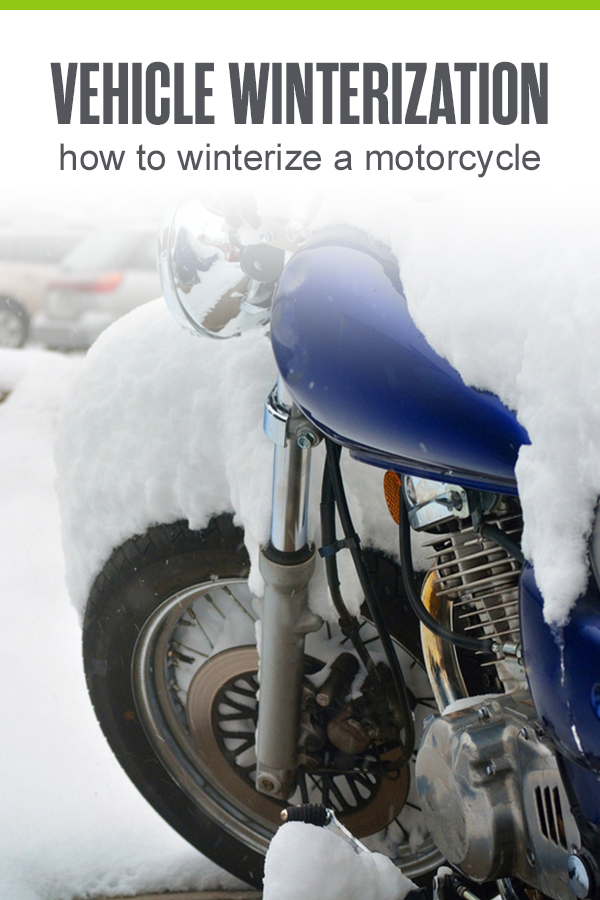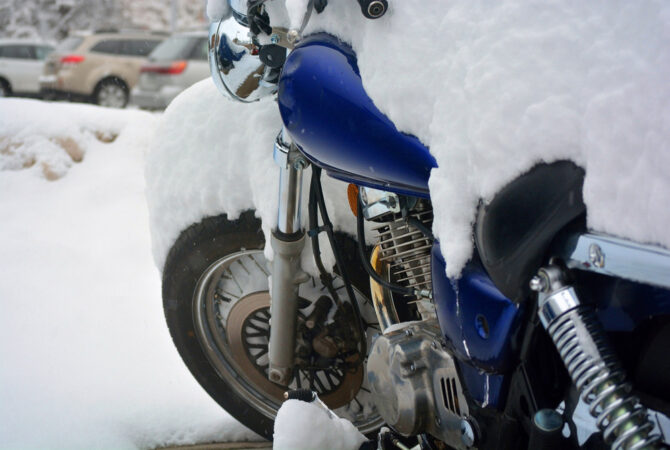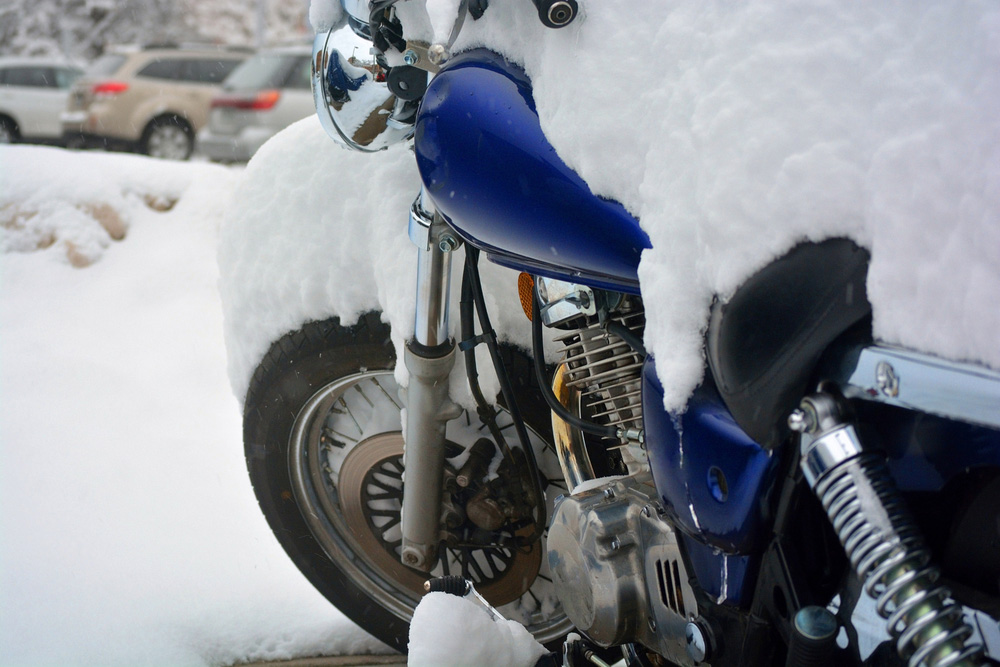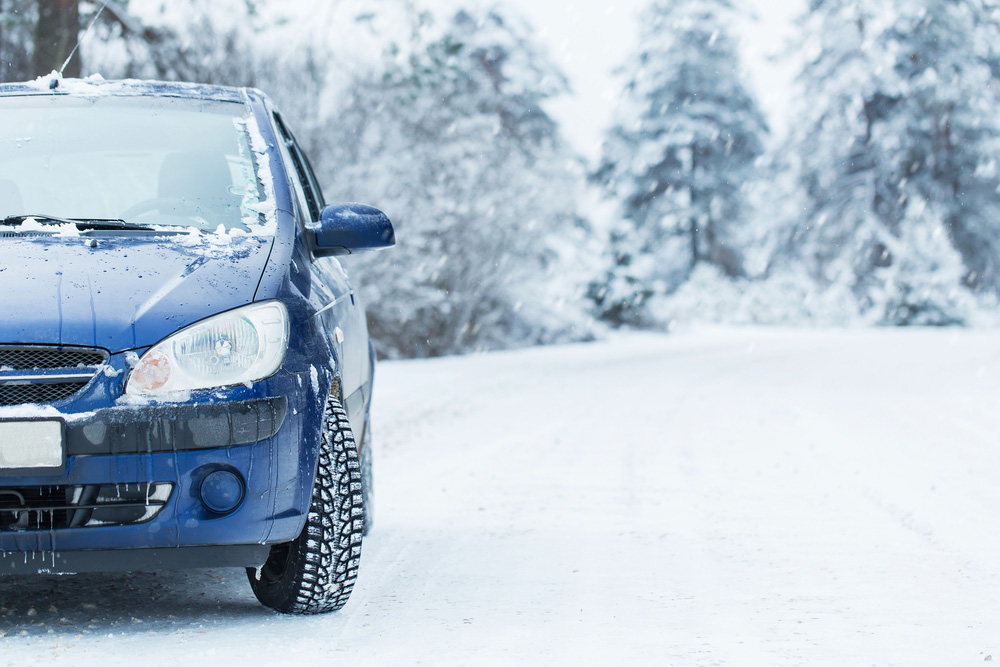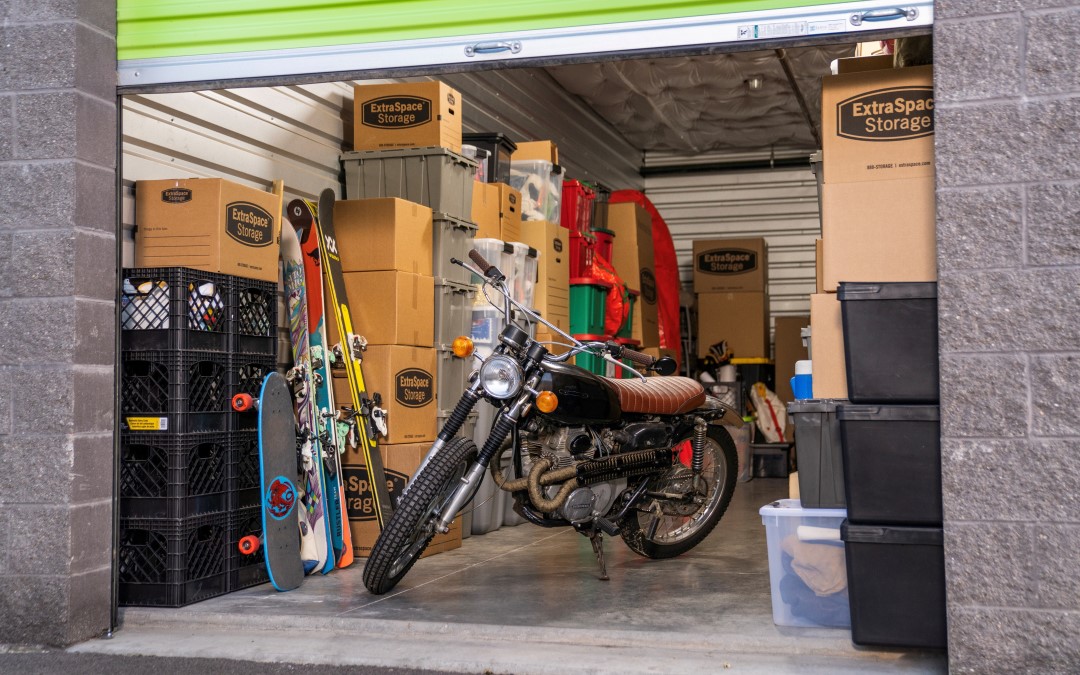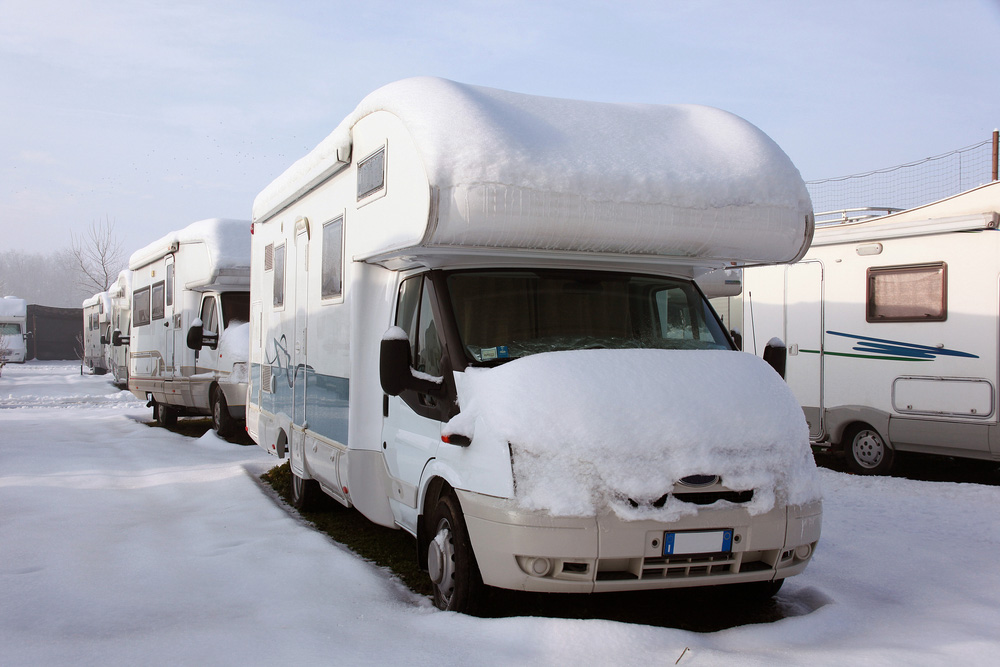An important part of motorcycle maintenance is preparing it for the off-season or winter months. From prepping the engine to protecting the exterior, there are a few necessary steps you need to take to keep your bike safe while it’s in storage. Follow these motorcycle winterization tips to protect your vehicle and ensure it’s ready to ride in the spring!
Things You’ll Need
- Oil and oil filter
- Lubricant
- Fuel stabilizer
- Antifreeze
- Transmission, brake, clutch fluids
- Cleaning products
- Motorcycle wax
- WD-40
- Tire pressure gauge
Step 1: Change the Oil & Filter
Make sure to change the oil and replace the filter in your motorcycle before putting it away for the winter. New oil can help prevent corrosion, as well as protect the engine and lubrication system while in storage. If you’re storing your bike for more than four to six months, apply a light coat of oil on cylinder walls and pistons. To do this, remove the spark plugs and add a bit of oil into the holes. Turn the engine over a few times to coat. Then, replace the spark plugs.
Step 2: Apply Lube to Moving Parts
Keeping motorcycle parts like cables, chain drives, controls, and pivot points lubricated will help prevent damage and corrosion during winter vehicle storage—not to mention, it will extend the life of your bike. Before applying lube to the chain, take your motorcycle on a five-mile ride to warm everything up. A warmer chain can help lube absorb more quickly. You should also give each part of your motorcycle a thorough scrub before applying a coat of lube for storage.
Step 3: Add Fuel Treatment
Empty gas tanks can rust while your motorcycle is in storage over the winter. Fill the gas tank about 90% full and add a fuel stabilizer to reduce the possibility of damage. Once you’ve added the stabilizer, run the motorcycle to let it flow through the engine. If your bike has a carburetor, be sure to shut the petcock off and drain your float bowls before filling the tank. Storing your bike for more than six months? You may want to empty the gas tank and spray the inside with fogging oil to avoid rust damage.
Step 4: Check the Fluid Levels
Especially if you’re storing a motorcycle in a cold climate, topping off the antifreeze is a must because it will prevent water buildup from damaging your cooling system. You should also change and top off the transmission, brake, and clutch fluids. Fresh fluid will help protect your motorcycle’s internal systems and pipes, as well as stop moisture from collecting. When adding fluids, avoid putting water in your antifreeze over the winter because it could turn to ice and cause the tank to burst.
Step 5: Clean the Bike
Letting dirt, dead bugs, or water spots accumulate on your motorcycle before storage can lead to corrosion of the paint and finish. Wash your motorcycle with a proper cleaner and let it completely dry before putting it away. Add a coat of wax to protect against rust and moisture, and spray all metal areas with WD-40. Make sure to also clean any leather parts like saddlebags, seats, or handle bars with leather care cleaning products to prevent damage during storage.
Step 6: Prep Exhaust Pipes
To prep your exhaust pipe for cold temperatures, spray some WD-40 into the end of the pipe to keep moisture at bay. Then, stuff the exhaust pipes with plastic bags, old clothing, or wash plugs to stop rodents and pests from crawling inside your bike. Make sure that whatever you use to stuff your exhaust pipes is a different color than the pipe so you don’t forget to take them out in the spring!
WHAT VEHICLE STORAGE UNIT SIZE IS RIGHT FOR YOU?
Step 7: Take Care of the Battery
Over time, the battery in your motorcycle can lose its charge, especially if it’s been sitting in long-term storage. Preserve the battery life and stop it from freezing by taking it out of the bike, topping off the battery cells with distilled water, and storing it indoors or in a dry garage. If you want to keep the battery in the bike, put it on a motorcycle battery tender. This device will allow your battery to be charged over a long period of time.
Step 8: Protect the Tires
During the cold months, motorcycle tires can develop flat spots from sitting in one position. Consider investing in a motorcycle stand for winter storage to keep tires from getting flat or move the bike every few weeks. You should also check the pressure in the tires and make sure they have the proper amount of air. Avoid storing your motorcycle on bare concrete and put carpet tiles or plywood underneath the tires to protect them from water damage.
Step 9: Find the Right Motorcycle Storage Solution
Wondering where to store a motorcycle during the off-season? Depending on the region you live in and what kind of bike you have, you’ll need to consider either indoor or outdoor vehicle storage options!
Indoor Motorcycle Storage Options
- Garage Storage: An affordable and convenient solution, storing a motorcycle in a garage at home is a great way to keep your bike safe from the elements and get some peace of mind.
- Storage Shed: Retailers like The Home Depot or Lowe’s sell sheds that can be used for motorcycle storage. Keeping your bike in a shed means you don’t have to take up space in a garage.
- Indoor Storage Unit: Self storage facilities that offer drive-up, garage-like units for vehicle storage are ideal for protecting your motorcycle over the winter.
Outdoor Motorcycle Storage Options
- Parking in a Driveway: Storing a motorcycle in a driveway at home is free, convenient, and allows you to keep an eye on your vehicle.
- Covered Storage Unit: Even though a covered unit at a self storage facility isn’t entirely enclosed, it provides a roof over your vehicle, keeping it safe from precipitation.
- Uncovered Storage Unit: Many self storage facilities offer outdoor parking spaces in gated, monitored lots, providing an affordable and easily accessible vehicle storage option for your motorcycle.
Whether you plan to store a motorcycle inside or outside, you need to invest in a quality motorcycle cover. For indoor storage, a dust cover is a good way to keep any dust and dirt at bay. A quality waterproof cover is perfect for outdoor storage because it will protect your bike from UV damage. No matter the cover you choose, make sure that it’s breathable enough to stop mildew or mold from forming.
***
Looking for indoor, covered, or outdoor vehicle storage for your motorcycle? Extra Space Storage has convenient storage facility locations throughout the U.S. Find a storage rental near you!
